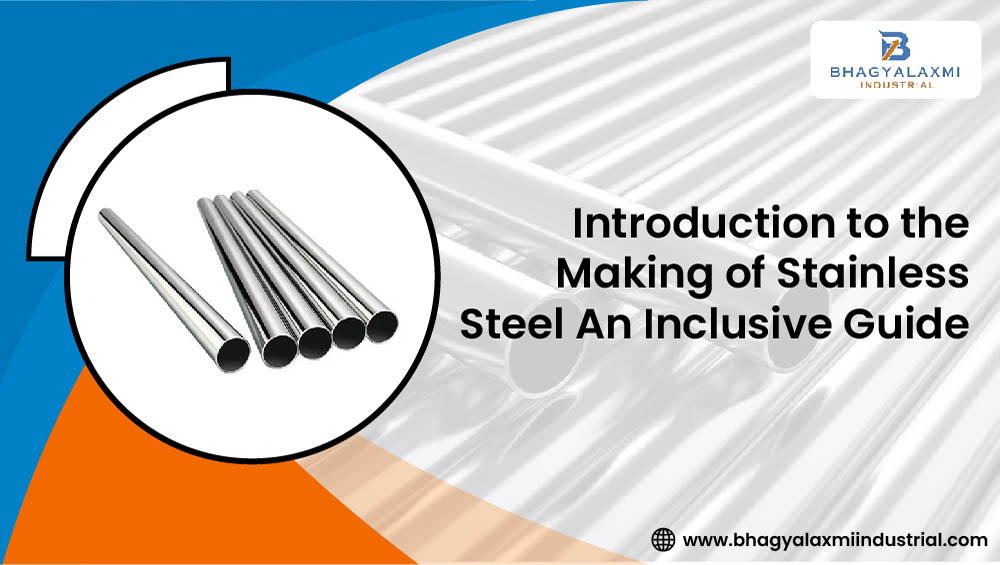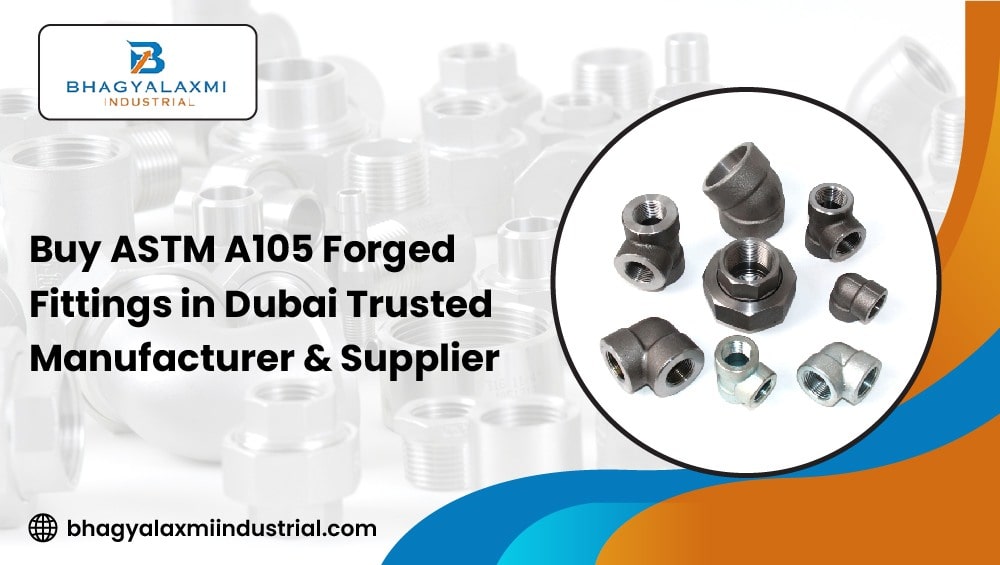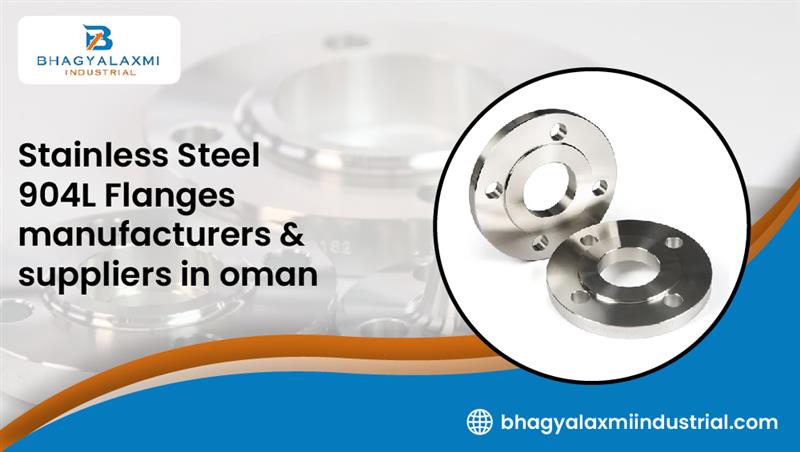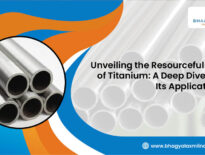Stainless steel, noted for its durability against corrosion, and strength, including adaptability, is an essential material in a variety of industries, including construction, automotive, food processing, and medicine. Stainless steel is produced through several sophisticated procedures, yielding a material that is both durable and aesthetically beautiful. Bhagyalaxmi Industrial digs into the fascinating world of stainless steel manufacturing, with an emphasis on how stainless steel 304 pipes and tubes, stainless steel 904L pipes and tubes, stainless steel 316L pipe fittings, stainless steel 316 pipe fittings, as well as stainless steel 304 sheet/plates/coils are manufactured.
The Basics of Stainless Steel Production
The material known as stainless steel is an alloy composed of iron, chromium, and sometimes, in certain cases, nickel alongside additional elements. The chromium component is the key component of its corrosion resistance, as it produces a passive coating of chromium oxide on its outer layer that protects against rust and corrosion.
The production of stainless steel usually involves the following steps:
- Melting: The process starts with melting the raw ingredients, such as iron ore, nickel, chromium, as well as other alloying components, in an electrical arc furnace (EAF) and a basic oxygen furnace (BOF).
- Refining: The molten metal gets subsequently refined to eliminate impurities and modify its composition to the specified grade. This is commonly accomplished by argon oxygen decarburization (AOD) as well as vacuum oxygen decarburization (VOD) methods.
- Casting: Depending on the ultimate product shape, the refined metals are cast as slabs, billets, or blooms.
- Hot Rolling: The cast component then gets heat rolled to minimize thickness while achieving the appropriate shape and dimension.
- Cold Rolling: Cold rolling is used on 304 stainless steel sheet/plates/coils to achieve a smoother finish with closer tolerances. This procedure additionally strengthens and hardens the steel.
- Annealing: Annealing the steel reduces internal tensions and increases its ductility. This includes heating steel to a specified temperature before progressively cooling it.
- Finishing: The final process entails finishing operations including pickling, grinding, as well as polishing to create the appropriate surface finish and characteristics.
Making Stainless Steel 304 Pipes & Tubes
Stainless steel 304 tubes and pipes are among the most popular stainless steel goods due to their high corrosion resistance along with formability. The manufacturing process of these tubes and pipes normally includes the following steps:
- Tube Mill: The process starts by using a coil of the stainless steel 304 sheet. The strip is put into a tube mill, which rolls it into a tube shape and welds the seam with a high-frequency welding procedure.
- Sizing: The weld tube is subsequently sized to the required dimensions utilizing a sizing mill.
- Annealing: The tubes themselves are annealed to release stress and maintain the correct mechanical qualities.
- Pickling: The tubes are pickled to eliminate any scale produced throughout the manufacturing process, leaving a clean surface.
- Polishing: For applications that require a polished conclude the tubes are polished to produce the necessary surface finish.
Crafting Stainless Steel 904L Pipes & Tubes
Stainless steel 904L pipes and tubes are noted for their high corrosion resistance, especially in acidic environments. The manufacturing method for these high-quality tubes and pipes has similarities to that of stainless steel 304, but with additional processes to assure the high purity alongside corrosion-resistant properties of the 904L grade.
- Special Melting: To ensure high purity, 904L’s raw materials are melted using sophisticated procedures like as vacuum arc remelted (VAR) and electro slag remelted (ESR).
- Precise Composition Control: The chemical composition of the melting metal is meticulously managed to create a specific equilibrium of chromium, nickel, molybdenum, and various other components that provide 904L its distinct qualities.
- Rigorous Testing: The pipes and tubes are rigorously tested to guarantee that they fulfill the highest standards of corrosion resistance along with mechanical qualities.
Developing Stainless Steel 316L and Stainless Steel 316 pipe fittings.
The stainless steel 316L and also 316 pipe fittings are critical components in pipeline systems due to their superior corrosion resistance, especially in marine and chemical-based environments. The production procedure for these fittings includes:
- Forging: The procedure starts with forging stainless steel 316L and 316 to the appropriate shape. Forging improves the grain organization and mechanical characteristics of steel.
- Machining: The forged fittings were then machined to meet the exact dimensions and tolerances necessary for pipe connections.
- Heat Treatment: The fittings are heat-treated to relieve stress and ensure the appropriate mechanical qualities.
- Finishing: The final process entails finishing procedures like pickling and passivation, which assure corrosion resistance as well as a clean surface.
Manufacturing Stainless Steel 304 Sheet/Plates/Coils
Stainless steel 304 sheets/plates/coils are flexible goods with a wide range of applications, including kitchen appliances and architectural features. The manufacturing procedure for these items includes:
- Hot Rolling: The process begins with the hot rolling of the sheets of steel made from stainless steel 304 to decrease their thickness.
- Cold Rolling: The hot-rolled sheets are then cold-rolled to the needed thickness and surface polish.
- Annealing: The sheets undergo annealing to reduce stresses and increase ductility.
- Surface Finishing: The final process entails surface finishing procedures like pickling, and grinding, along with polishing to accomplish the desired appearance and characteristics.
Conclusion
Stainless steel manufacture is a complicated and multifaceted process requiring precision, experience, and cutting-edge technology. From stainless steel 304 pipes and tubes to stainless steel 904L pipes and tubes, in addition to stainless steel 316L pipe fittings with stainless steel 304 sheet/plates/coils, everything necessitates a unique strategy to ensure it satisfies the specific requirements of its application. Stainless steel’s versatility and durability make it a vital material in a wide range of sectors, and its manufacturing exemplifies human ingenuity and technical growth. Bhagyalaxmi Industrial endeavors to innovate and enhance our production processes and stainless steel is bound to play an important role in determining our future.










